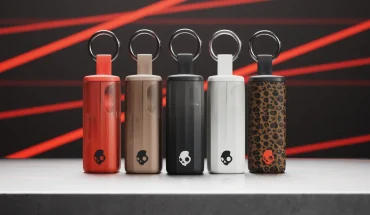Earlier this month, music streaming service Spotify announced that it would be adding lossless listening to its Premium tier, providing a “richer, more detailed listening experience” for its customers. Spotify is not the first music streaming service to offer lossless audio quality, but this is a big move for the popular option, which reports having 276 million paying subscribers across 180 markets. For those who care about getting the best possible audio quality, lossless streaming is the preferred option. Let’s dive deeper.
What is Lossless Music Streaming?
Before noting where you’ll find lossless audio, it’s important to understand what it is. In simple terms, lossless audio quality is a higher quality version of audio. Most of the entry streaming services offer what’s called lossy audio as a default. As the name implies, lossy audio involves compressing the audio file so it’s smaller and thus easier to store and requires less bandwidth to stream. But it also means you lose a lot of detail in the songs you’re listening to as a result of this compression process.
The best possible audio quality would be uncompressed, which is an identical replica of what was recorded. Lossless is like a happy medium: the file has been compressed but in a better way that doesn’t leave details behind nor impact the sound quality.
You’ll usually find lossless files listed as FLAC or ALAC while lossy files are MP3 or AAC formats. The file size is typically 16-bit/44.1kHz (or higher), the same bitrate and sample rate as CDs. Indeed, CDs are the last generation of lossless audio before lower-quality streaming took over.
Which Services Offer Lossless Music Streaming?
Looking to enjoy lossless audio? Spotify isn’t the only game in town. Here are some of the top streamers, including Spotify, to consider along with what they offer and pricing.
 Spotify: With a Spotify Premium subscription, you can stream tracks in up to 24-bit/44.1kHz FLAC format. The new lossless streaming option is currently available in select markets and will roll out to more than 50 through October 2025. When listening, you can choose Low, Normal, High, Very High, or now Lossless music quality, adjusting as needed. You might, for example, want to stream at a lower bitrate when listening on the go via the cellular network versus Wi-Fi to conserve data. Spotify is accessible on mobile, desktop, and tablet, and on devices that support Spotify Connect from brands like Sony, Bose, Samsung, and Sennheiser, and offers a selection of more than 100 million songs. Lossless playback needs to be enabled for each device for it to work and you will need the paid Spotify Premium tier. $0 for 3 months, $12.69/mo. thereafter.
Spotify: With a Spotify Premium subscription, you can stream tracks in up to 24-bit/44.1kHz FLAC format. The new lossless streaming option is currently available in select markets and will roll out to more than 50 through October 2025. When listening, you can choose Low, Normal, High, Very High, or now Lossless music quality, adjusting as needed. You might, for example, want to stream at a lower bitrate when listening on the go via the cellular network versus Wi-Fi to conserve data. Spotify is accessible on mobile, desktop, and tablet, and on devices that support Spotify Connect from brands like Sony, Bose, Samsung, and Sennheiser, and offers a selection of more than 100 million songs. Lossless playback needs to be enabled for each device for it to work and you will need the paid Spotify Premium tier. $0 for 3 months, $12.69/mo. thereafter.
Apple Music: While Apple Music is only available for Apple device owners, it’s a fantastic option for those who are in that ecosystem. You get 24-bit/48kHz Apple Music Lossless files and up to 24-bit/192kHz Hi-Res Lossless, depending on the tracks, while most are at least 16-bit/44.1kHz. The library size is over 100 million songs, including access to Apple Music Classical as well as part of the subscription. It’s accessible on iOS devices, iPad, as well as through the desktop app on a Mac, Apple TV, and other Apple devices. Files are available in the AAC and ALAC formats and some are in spatial audio with Dolby Atmos as well. $11/mo. for individual; $17/mo. for family plan; $6/mo. for students; option to add to an Apple One subscription to save by bundling.
Amazon Music Unlimited: With a library of more than 100 million tracks, Amazon Music Unlimited offers many tunes in what it calls its Ultra HD songs, which are 24-bit/192kHz as well as others that are CD-quality at 16-bit/44.1kHz. There are also tracks mixed in Dolby Atmos and Sony 360 Reality Audio. Listen on mobile devices, PCs, and Macs via web player or desktop app. It’s also supported on some Amazon Fire tablets as well as TVs, even some in-car systems and speakers from brands like Sonos. 4 months free with Prime, 3 months without; renews at $12/59/mo. or $11.54/mo. for Prime members.
 Tidal: Listen to tracks up to 24-bit/96kHz (some up to 24-bit/192kHz) in FLAC or AAC and choose from the extensive library of more than 100 million songs as well as 350,000 videos on Tidal. Some content is also mixed using immersive audio technology like Dolby Atmos Music and Sony 360 Audio. Accessible from a mobile device, desktop, and web player, Tidal is one of the first to bring lossless streaming to the mix and make it accessibly priced. $11/mo. for Individual plan; $17/mo. for Family Plan; discounted rates for eligible students.
Tidal: Listen to tracks up to 24-bit/96kHz (some up to 24-bit/192kHz) in FLAC or AAC and choose from the extensive library of more than 100 million songs as well as 350,000 videos on Tidal. Some content is also mixed using immersive audio technology like Dolby Atmos Music and Sony 360 Audio. Accessible from a mobile device, desktop, and web player, Tidal is one of the first to bring lossless streaming to the mix and make it accessibly priced. $11/mo. for Individual plan; $17/mo. for Family Plan; discounted rates for eligible students.
Deezer: The Premium, Duo, and Family listening Deezer plans come with access to lossless audio at 16-bit FLAC files and a total selection of more than 90 million songs. Access it from mobile devices, desktop app, web player, and more, including the Xbox gaming console. There’s a special HiFi Room with HiFi editors that offers lossless, CD quality music streaming. One month free then $12/mo. or $20/mo. for up to six accounts.
 Quboz: A service designed specifically for audiophiles, Qobuz offers FLAC files with quality up to 24-bit/192kHz and a library of more than 100 million songs. Listen via the iOS and Android apps on a mobile device, desktop app, web player, and more, including some Samsung TVs, Apple CarPlay, and Android Auto. You also get 24-bit5/48Khz playback through Sonos speakers. It’s one of the more expensive services, but the catalogue is expansive. Quboz has offered lossless audio from the beginning. $10.83/mo. for an annual commitment or $13/mo. for month-to-month; $15/mo. or $18/mo. for two accounts; $18/mo. or $21.90/mo. for up to six accounts; $5/mo. for eligible students.
Quboz: A service designed specifically for audiophiles, Qobuz offers FLAC files with quality up to 24-bit/192kHz and a library of more than 100 million songs. Listen via the iOS and Android apps on a mobile device, desktop app, web player, and more, including some Samsung TVs, Apple CarPlay, and Android Auto. You also get 24-bit5/48Khz playback through Sonos speakers. It’s one of the more expensive services, but the catalogue is expansive. Quboz has offered lossless audio from the beginning. $10.83/mo. for an annual commitment or $13/mo. for month-to-month; $15/mo. or $18/mo. for two accounts; $18/mo. or $21.90/mo. for up to six accounts; $5/mo. for eligible students.
Other Tips for Enjoying HiFi Music
If you want to get the most out of lossless streaming, consider these tips.
Listen from a high-end speaker or, when using a mobile device, pair it with wired headphones versus wireless. Bluetooth doesn’t provide enough bandwidth to transmit lossless audio, so you will be listening with a compressed signal if you have wireless headphones or earbuds.
While it’s important to have a premium pair of headphones or earbuds that support lossless playback, consider also investing in a DAC, which you might need to fully enjoy lossless tracks through a smartphone and decent pair of headphones. With Apple Music, for example, if you want to enjoy Hi-Res Lossless from an iPhone, you will need an external DAC alongside a pair of wired headphones. (Otherwise, you can enjoy Apple Music Lossless).
If you are still hanging onto those old CDs, “rip” them (remember doing that?) and save the digital files to your own personal offline lossless listening library.
Finally, keep data usage in mind. If you are streaming lossless audio, it will use up more data. For commuting and connecting to cellular, you might want to stick to downloaded playlists or limit lossless listening to keep within the parameters of your monthly data bucket. Consider that a standard three-minute CD-quality song at 24-bit/48kHz will use about 36MB of data while a hi-res lossless track at 24-bit/192kHz will use 145MB or more. That’s four times the data for a better quality version of the same song.
-30-



